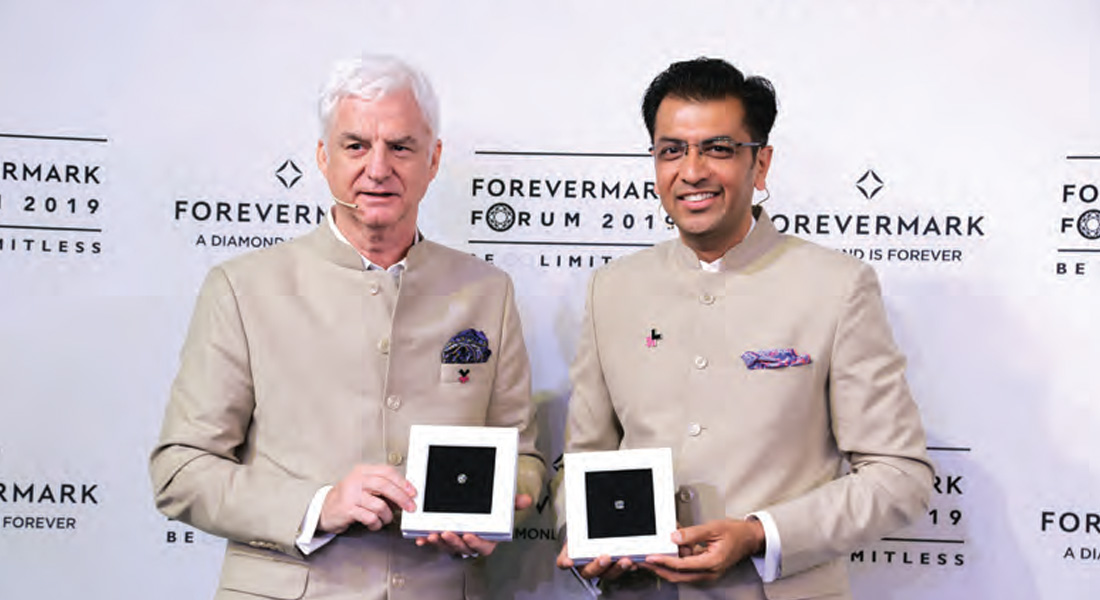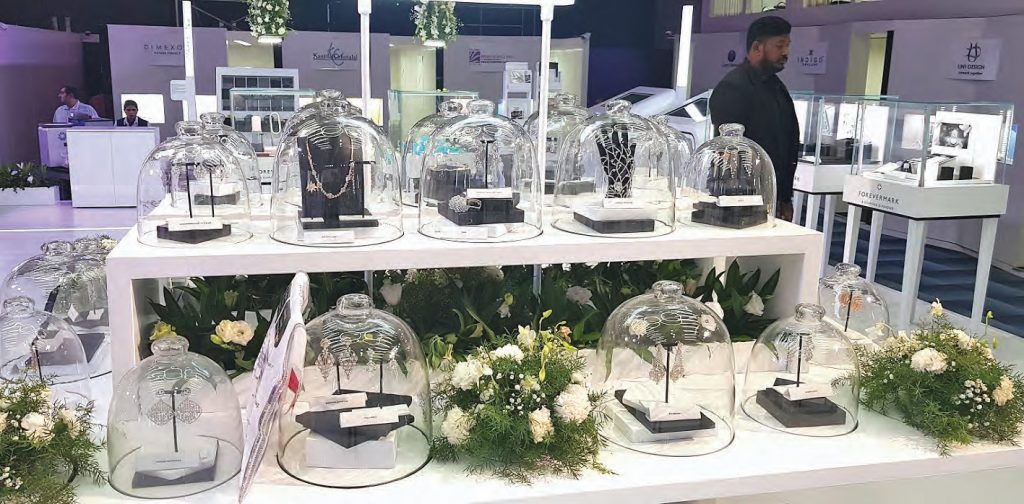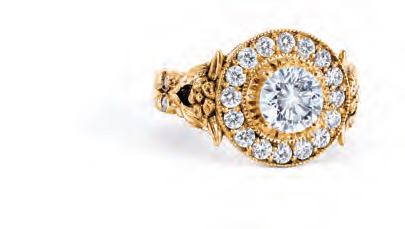The De Beers brand aims to sell more than 275,000 diamonds totalling 75,000 carats in India by the end of 2019.
Forevermark India hosted the eighth edition of the Forevermark Forum in Bengaluru from July 9th -11th, which had an interesting central theme – ‘Be Limitless’. Over the past eight years, Forevermark, the diamond brand from the De Beers Group, has spearheaded an all-encompassing platform, the Forevermark Forum, for all their authorised jewellers, diamantaires and manufacturers from around the world. The aim is to bring its partners together to interact, network and exchange insights on Forevermark’s growth and vision for the industry, within a global framework.
This time, Forevermark took the participants through an insightful journey of exclusive showcases, comprehensive consumer and retail awareness campaigns, technology breakthroughs for the industry along with expert talks by new visionaries. The brand also revealed some results about the recent Diamond Acquisition Study that was conducted nationwide to research the diamond jewellery purchasing and consumption habits of people. Forevermark displayed over 2,000 designs that were thematically based on four key mood boards: enigma, on the wave, culture fusion, and one of a kind.
Speaking on the occasion, STEPHEN LUSSIER, executive vice-president, marketing, De Beers Group, and chairman, Forevermark, said, “As technology, artistry and innovation change rapidly, our perennial goal at Forevermark has been to develop the present, and adapt to the future. Given De Beers’ heritage and legacy, this year we embrace the unconventional path, and explore different avenues to being limitless, at the Forum. Our partners witnessed unique retail innovations that will empower them to work with the leaders of the industry.”
SACHIN JAIN, president, Forevermark India, added, “Over the years, the Forevermark Forum has pushed the limits and become a key event for us to strengthen our partnerships and expand our horizons. Inspiring individuals from multiple backgrounds to nurture fresh perspectives, the Forum has remained a key event for leading the diamond industry to new heights. It gives us the opportunity to work closely with our partners and grow our business multi-fold. When we work together, the future is limitless.”
At a press conference held on the last day of the Forum, Stephen Lussier and Sachin Jain threw more light on the current and future prospects of Forevermark in India.
How did the Forevermark Forum pan out? How is the market mood in general?
Stephen Lussier: I felt a lot of enthusiasm in India, at least among all our partners. I could feel the energy and opportunity. I feel quite motivated after the last three days. At the moment it isn’t an easy world, what with trade woes, changes in our taxation, but here we were taking charge of the situation and I am in a happy mood.
Our brand is strong because we help retain consumer confidence. The core of Forevermark’s offer to the consumers is around the confidence in the diamond they buy. And you have the entire De Beers Group standing behind the process of selecting, testing and ensuring that the diamond is one hundred per cent natural. So, trust in the brand and the inscription has helped power the brand.
And even for the entire diamond market, the De Beers Group, with our sightholders, have distributed a real high volume of technology that enables the sightholder to give that one hundred per cent confidence to the consumer that the diamond is natural. Over the past 18 months, the technology has improved and is in place across India among all the major diamantaires.
For the industry, De Beers is investing so much in the Tracr programme, a blockchain-based technology that will instil confidence beyond just the Forevermark brand, to the diamantaires at large.
How has Forevermark fared in India in the first half of the year vis-a-vis its other strong markets?
Stephen Lussier: India has been our strongest market. If we look at the last couple of years, the growth has been central to driving Forevermark’s global growth.
Sachin Jain: We have had an exceptional first half, and we are up by 36% as compared with last year. Interestingly, we didn’t add partners last year; instead, we ensured that their share of voice went up.
This only increases my faith that we get too bogged down by negativity. There is enough opportunity in the market, and we think that our endeavours have been moving the gold consumers to diamonds.
During Akshaya Tritiya this year, we worked with a lot of our partners and focused on how we could make this pendulum shift. So, for instance, when a consumer walked into the store on the day of Akshaya Tritiya with the intention of buying gold, we encouraged our partners to start telling stories about diamonds. It is about telling consumers the story of diamonds in a manner which they think is transparent; it’s not unaffordable, it is a design that they can relate to. The issues about trust when buying diamonds were taken care of by Forevermark.
So, one of our biggest endeavours this year has been to sell close-setting diamond jewellery. Selling diamonds means the margins are better; the value is better.
Forevermark recently conducted the Diamond Acquisition Study across 41 tier 1, 2, 3 and 4 cities/towns in India, and interviewed 16,500 consumers. When will the results be out? Could you share some early insights?
Sachin Jain: Of course, we will publish the results shortly. We interviewed people across different tiered cities about their purchases, demand patterns, emerging markets, and milestone occasions for purchase, seasonality and general outlook.
In India, the diamond penetration is only about 10% and that too only in the elite group. There is such a big opportunity waiting to be tapped.
The important thing that we learnt was that the bridal segment is today down by 42%. Wearing daily wear or casual jewellery is emerging to be a major trend.
As an industry, we are over- obsessed about offering only bridal products. It’s time we go beyond that. Self-purchase and self-worth is becoming significant.
Surprisingly, the study reveals that lab-grown diamonds are not a consumer issue. In India, it is limited to being a trade issue.
Globally, the polished diamond prices have softened. Are the margins being passed on from manufacturers to retailers and consumers? Also, how has the demand for diamond jewellery been?
Stephen Lussier: Yes, globally the polished prices have softened, but retail prices are not going down much as retailers are trying to get margins back. It is not an easy macro-economic time, and there are some structural issues. If you look at overall demand, last year, demand for diamond jewellery was very good in the world. The US was up by 4-5%; China was strong in the first half of last year; and India was good towards the end of last year.
So the problem is that sometimes it’s too much supply, particularly in the really small goods, in the first part of last year.
Secondly, there is an impact of financing felt in the secondary market in India – the ability of the smaller players, of which there are lots, to hold the inventory. It is creating a structural change in the midstream, which is not demand related.
Thirdly, the trade war between US and China is definitely impacting China. There is a sentiment impact on the wealthy Chinese businessmen. Sales are at the same level. But retailers in China are cautious now and are not replenishing their inventories in the same way they would have normally done if there were no trade war. And that is impacting on the midstream demand more than consumer demand. Consumer demand in China is softer, but the retailer demand is softer still. It is a tricky time. We [De Beers] have noticed that the sights are smaller, and that is helping them. The midstream has less new production, less new rough coming in.
Will the 2.5% hike in the gold import duty to 12.5% impact jewellery sales?
Sachin Jain: I don’t think it is going to have any impact. We are too emotional about gold. The impact may be on bullion, but not on the jewellery market.
I interact with every partner of ours, and everybody is selling more. Business for everybody who is dominant in gold has gone up.
Did you face any challenges when you launched Forevermark in India, where consumers usually gravitate towards family jewellers? Also, branded diamond jewellery was a very new concept then when you launched here.
Sachin Jain: Yes, we did face a lot of challenges. Here the longevity of every family-owned brand is normally 100 years or so. Hence we had to really change the way we operated. From day one, we had to be inclusive and work with retailers. It took us a bit of time to break through.
Another challenge we faced was that earlier our production was based out of Antwerp. So every single diamond had to physically cross the boundary since the labs were there. The process itself was very cumbersome. When we set up a lab in Surat, it really became a turning point for us.
Stephen Lussier: Our model has been very unique, and as a global brand we have some aspects that are non-negotiable. Ours is about partnership and we work with
each jeweller and help them to make products that they need for their local market. That means it is more work for us because every jeweller is a unique partner and
you co-create the brand with him. The process therefore is much
more work-intensive, but once you get to the right place, the partners are much more committed with you. In India, they are probably more involved than in other Forevermark markets, and yes, we did tweak a bit in terms of design for the Indian market.
Forevermark is venturing into tier 4 and 5 cities as well. How has the response been to the brand?
Sachin Jain: It is amazing to see how consumers are receptive to new designs across tiered cities. I think the digital platform is very powerful. Honestly speaking, people in these towns and cities have a little more time on hand, and that is good for the brand. For them, digital media is a form of entertainment. Our research has pointed out that we get a lot of traction from smaller markets.
Forevermark has had several collaborations with Indian fashion designers and top retailers to create red carpet collections. Is this activity unique to the country, or do you have similar tie-ups in your other global markets?
Stephen Lussier: Forevermark works with celebrities and celebrity endorsements globally. In America, we particularly focus on red carpet partnerships that bring followers and the glamour of celebrity to focus on the brand.
In India we do that, too, but we also have creative contributions – Sabyasachi, in particular, has both glamour and exciting ability to contribute. These ventures are more unique to India. But it is an idea that we can adapt globally as we see opportunity for this around the world. In the world of luxury goods, there are more efforts on co-creation to reach new consumers. When Louis Vuitton (LV) co-branded with Supreme, it brought millions of young consumers to LV’s social media.
Inclusivity works these days, and lessons from India should be adapted.
What are the key takeaways from the Forum?
Sachin Jain: The theme of the Forum this time is Be Limitless. And what this means to De Beers and for Forevermark is that in the time phase from 2019 to 2024, India will transform from a $2.7 trillion economy to becoming a $5 trillion economy. This happens in nations perhaps once in a hundred years. But this won’t happen automatically. We have to look at opportunity in context, and we have the leaders of the business today to seize that opportunity. We will give them chances to incorporate change and do business differently – by knowing the consumer better, knowing designs, changing the format of retail and other tangible changes that we are bringing in the retail space to be the drivers of change.
The next growth phase in the diamond business will be the growing consumer demand in India and we as a company believe that we are at the right space at the right time to leap into this big change. Heera hai sada ke liye (A Diamond is Forever) is not just a marketing slogan at De Beers. It tells us about the fundamental truth that diamonds have been around forever and this timelessness actually represents long-term relationships. Ironically in this era of disruption and change in technology, we feel that the desire to express genuine love is higher than ever, and that it will only grow from here.
Stephen Lussier: There is a lot of passion here for the brand. The Forum particularly focused on innovation in retail display to attract young women into the stores. We need to do some transformation in the store environment. Make women feel that diamond jewellery can be cool!
What are the expansion plans of Forevermark India?
Sachin Jain: When we conceptualised Forevermark, we were aware of the issue of consumer confidence; we also knew that consumers are more interested in brands and provenance, as to where the diamonds are coming from. It was also about collaborations. That was the real role of Forevermark, and we are a true catalyst for our business partners as our objective is to grow their business and ours. We intend to end the year with about 275,000 diamonds, touching about 75,000 carats in India.
Stephen Lussier: It seems like a long time ago, but till seven years ago, there were no Forevermark stores in India. Our very first one was in Bengaluru, when we collaborated with Abaran. Today, we have 240+ doors across India. Globally, this year, we are aiming to sell 175,000 carats of diamonds. It has been a fantastic story of success. Last year, we sold the highest number of diamonds in China, and India ranked second. The Indian team’s challenge – to be No. 1 – is within their grasp.
Our endeavour has been an extraordinary success story in a world economy that has not been robust in the past few years. Despite that, Forevermark has done exceptionally well.
What is the secret of Forevermark’s success?
Stephen Lussier: One of the key drivers of growth is the power of brands. We are living in the age of global brands that are becoming important engagers of consumers and are drivers of demand. And global brands have particular advantage in the world of social media. Young consumers look at brands on social media to check what the trends/designs are.
The diamond world, to be honest, is probably slow on the uptake of brands. But we are catching up rapidly. In the US and China markets today, majority of the diamonds sold for engagement rings are branded. In India we can see from the success of Forevermark that there is an inherent desire among consumers for quality. I think we are riding a wave that will only grow bigger, and the advantage for us is really that we are there first and we are there in a powerful way with a global offering that we can localise here in India.
Perhaps a decade ago, what defined luxury was exclusivity; quality; reflection of status and a projection of financial success. But these qualities will not define luxury brands in the coming decade.
Today, luxury is meant to be inclusive; it’s about craftsmanship, and it is not just about financial status, but also about aspiration. Above all, luxury is shifting to social purpose. We aspire for brands that want to make the world a better place, and make a fundamental positive contribution.
Whether by design or a bit of luck, or foresight, Forevermark has always believed from the beginning in the new definition of luxury. We are an inclusive brand. We are not super expensive. You can enter the world of Forevermark at all sorts of price points. The only thing you need for being a consumer of Forevermark is to believe in beautiful diamonds.
It’s always about the craftsmanship – from the rough selected by us, experts who polish, labs, partners who craft jewellery.
The social purpose is that each diamond is beautiful, rare and responsibly sourced. From the beginning, we have been talking about all the good diamonds do as they travel from the pipeline.
So, what positive contribution do we make? We focus on the HeForShe programme in which we are investing $3 million to support women and girls in Botswana, Canada, Namibia and South Africa.
We are committed to protecting the natural world. De Beers is partnering with Moving Giants, the largest elephant “re-wilding” effort ever attempted from South Africa to Mozambique, as 200+ elephants will journey more than 1,000 miles to their new home.
A person who buys Forevermark diamonds knows that our company is committed to these values and we are making a positive impact. That’s why we are growing.
Forevermark Initiative is to inspire consumers about the story of natural diamonds. Through this initiative we want to lower our carbon footprint. We will speak of the history and magic of diamonds in new ways to engage them.



